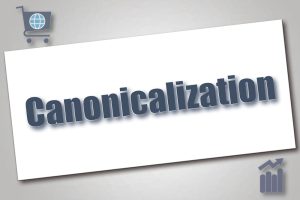When it comes to healthcare websites, the way content is structured and laid out is just as important as the content itself. Even the most insightful, well-written content won’t perform if it’s not organized in a user-friendly way. Content structure and layout play a vital role in ensuring that your website engages visitors, guides them through your services, and ultimately converts them into patients.
In this blog post, we’ll dive into why content structure and layout matter and how healthcare businesses can optimize these elements to improve user experience and conversions, based on insights shared by Justin from Webtek Interactive during his interview.
1. The Importance of Content Structure in Healthcare Websites
Healthcare websites often handle complex information. Patients may visit your site looking for details on treatments, services, and conditions they’re experiencing. Without clear and logical content structure, this information can easily overwhelm or confuse visitors, leading to a high bounce rate.
A Clear Patient Journey:
Justin emphasized the importance of guiding patients through a clear, structured journey on your website. This journey typically starts on the homepage, which should serve as the gateway to different sections of the site. Each section should address a specific patient need or question, whether it’s information on services, booking an appointment, or learning more about the practice.
For example, on your homepage, you might have three primary calls to action:
- “Learn About Our Services” for those looking to explore treatment options.
- “Meet Our Team” for visitors wanting to know more about your healthcare professionals.
- “Book an Appointment” for patients ready to take action.
By providing these distinct paths, you allow visitors to quickly navigate to the section most relevant to them without feeling lost or overwhelmed.
Tip: Make sure your most important content is organized hierarchically, with critical information placed at the top of each page (above the fold), and supporting information below. This keeps the key details front and center, ensuring users find what they need without having to dig.
2. Layout for User Engagement: Simplicity is Key
While structure ensures content is logically organized, layout determines how this content is presented visually. Justin stressed that a clean, simple layout with minimal distractions is key to keeping users engaged. When it comes to healthcare, patients are often in a vulnerable state and may not have the patience to sift through cluttered, confusing pages.
The Fewer Distractions, the Better:
One of the most common mistakes healthcare websites make is crowding the page with unnecessary elements—multiple images, excessive text, and competing calls to action (CTAs). This can distract users from the main goal: booking an appointment or learning more about a service.
A clean layout highlights the most important aspects of your site without overwhelming visitors. For example, instead of flooding the homepage with various competing sections, consider focusing on three or four key elements:
- A prominent hero section with a CTA like “Book an Appointment.”
- A short introduction to your practice and services.
- A section on your specialties or patient testimonials.
Using white space effectively is another key principle Justin mentioned. White space, or empty space between design elements, allows the content to “breathe.” It draws attention to the most important parts of the page and makes it easier for users to focus on the next step.
Tip: Stick to a simple, two or three-column layout and avoid overloading any one section of the page with too much information. Clear, concise headings and subheadings help break up the content, making it easy to scan.
3. Content Above the Fold: Prioritize Key Information
One of the most critical lessons from Justin’s insights is the importance of using the “above the fold” area effectively. This refers to the section of the page that is visible without the user having to scroll. On any given page of your website, the above-the-fold content should communicate the most important message or action clearly and quickly.
For healthcare websites, the above-the-fold area should focus on your primary CTAs, such as booking an appointment or learning more about a specific service. If your key content or CTA is buried below the fold, it’s likely that many users won’t even see it, let alone act on it.
For instance, if you run a pediatric clinic, your above-the-fold content might feature:
- A headline: “Comprehensive Pediatric Care for Your Child.”
- A subheading: “Now Accepting New Patients – Schedule an Appointment Today.”
- A prominent “Book Now” button.
Justin highlighted that by ensuring this information is immediately visible, you eliminate the need for patients to scroll endlessly to find what they’re looking for.
4. Balancing Text and Visual Elements
The balance between text and visual elements is crucial for any healthcare website. Too much text can be overwhelming, especially when discussing complex medical services or procedures. On the other hand, excessive images or icons can distract from the main message.
Justin emphasized that content should be visually digestible—this means breaking down information into smaller chunks, using bullet points, icons, or infographics to make the page more skimmable. Patients often skim through content, especially when they are seeking quick answers.
Infographics and Icons:
Visual aids such as icons or infographics can help break down complex information into easy-to-understand visuals. For example, if you’re explaining a treatment process, consider using a flowchart or infographic that outlines each step clearly. This makes it easier for patients to follow along and understand what to expect.
However, Justin cautioned against overusing stock images and generic visuals, which can detract from the authenticity of your website. Where possible, use real images of your practice, staff, or facilities to create a more personal connection with visitors.
Tip: Incorporate images and icons sparingly and only when they add value to the user experience. Pair visuals with concise, meaningful text to explain your services without overwhelming the user with information.
5. Accordion-Style Content for Better User Experience
One of the more advanced techniques Justin mentioned was using accordion-style content. This is a design pattern where sections of text expand or collapse when clicked, allowing users to explore more information if they choose, without overwhelming them at first glance.
This technique is particularly useful for FAQ sections, where users may want to quickly scan through different questions and expand the ones that are relevant to them. It also helps keep the page clean and concise, with the option to dive deeper into more detailed content if needed.
Tip: Use accordion-style content for areas of your site that need to house large amounts of text or information, such as FAQs, detailed service descriptions, or educational content.
Conclusion
The structure and layout of your healthcare website can have a profound impact on user engagement and conversion rates. By creating a clean, easy-to-navigate structure and ensuring that your layout is intuitive and visually balanced, you create a seamless experience for your visitors. Focus on simplifying the patient journey, prioritizing key information, and balancing text with visuals to guide users toward taking the next step—whether that’s booking an appointment, learning more about your services, or reaching out for more information.
Following these best practices, as highlighted by Justin, will ensure your website is both user-friendly and conversion-driven, helping you grow your healthcare business more effectively.
Watch the full interview here:





